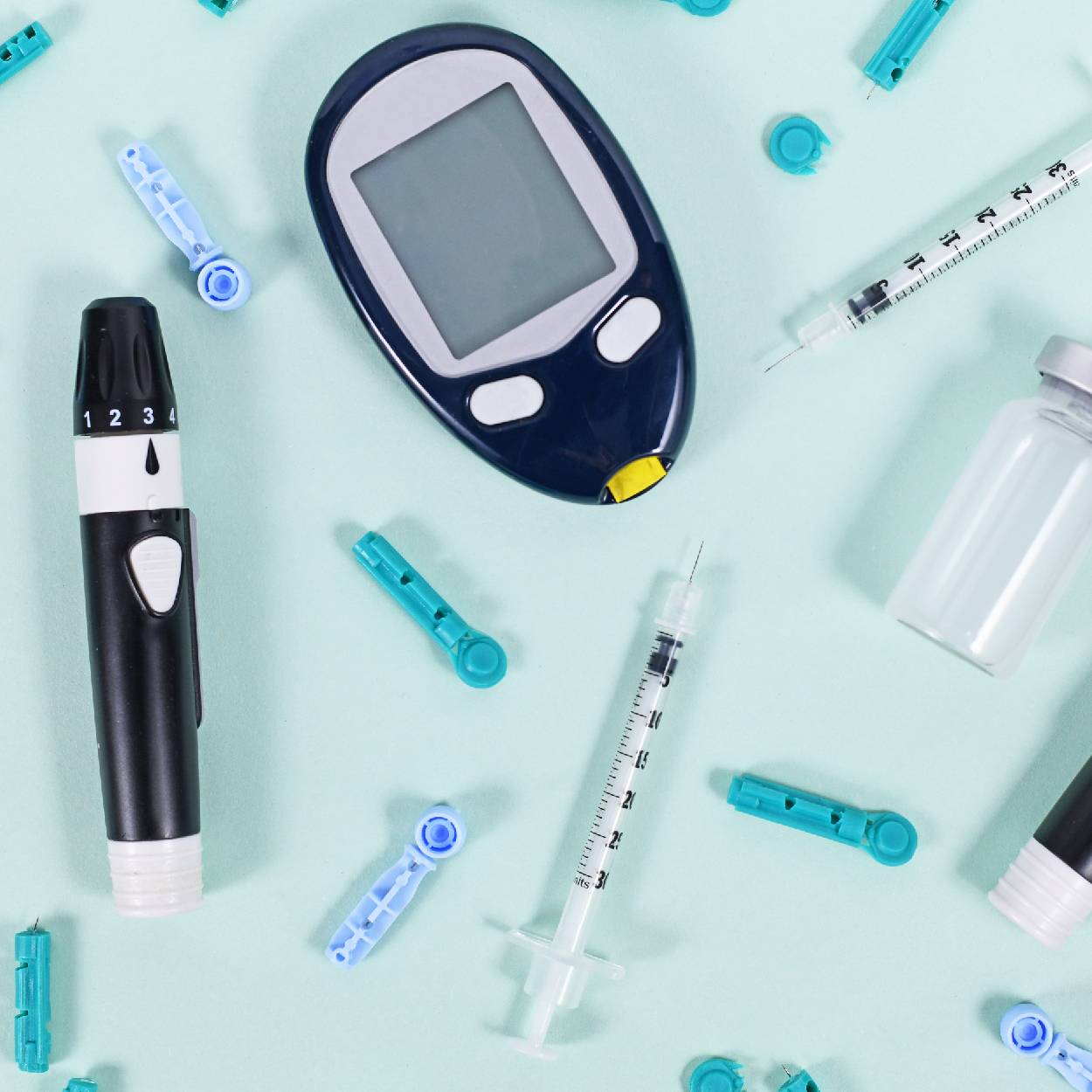What is Fiber?
According to The Dietary Guidelines for Americans 2010, fiber is the non-digestible form of carbohydrates and lignin that naturally occurs in plants. (1) Fiber found in carbohydrates is non-digestible because the bonds in the molecule cannot be broken down into sugar by human enzymes to be used as energy. (2) Lignin is a substance found in the cell walls of many dry land plants. It is the only polymer that is not made up of sugar monomers. It provides stiffness and rigidity to plants. (3)
Recommended Amounts of Fiber
- American Diabetes Association Recommendation for people at risk of Diabetes: Individuals at risk for type 2 diabetes should be encouraged to achieve the U.S. Department of Agriculture (USDA) recommendation for dietary fiber (14 g fiber/1,000 kcal) and foods containing whole grains (one-half of grain intake). (6)
- Canadian Diabetes Association Recommendation for people with Diabetes: Optimally people with diabetes should have 25 to 50 grams of fiber per day. It is recommended to ask your physician if this is for you before making changes. If fiber is increased rapidly, it may cause bloating, if approved by your medical team increase consumption gradually. (7)
- American Diabetes Association Recommendation for People with Diabetes: Consuming at least 14g/1,000 kcal/d or a range of 25 to 30 grams per day. (8)
- American Dietetic Association (Now called the Academy of Nutrition and Dietetics) Recommendation for people with type 2 diabetes: The American Dietetic Association recommends 30 to 50g of dietary fiber per day for patients with type 2 diabetes mellitus. (9)
In addition to amount of fiber, one may also want to consider the type of fiber to be consumed. Nutritionists often refer to the fiber in our diets as soluble or insoluble. During digestion, soluble fiber dissolves in water, turns to a gel and slows down the digestive process. This includes slowing down transit time through the stomach which helps with satiety. Foods that contain soluble fiber include oat bran, barley, nuts, seeds, beans, lentils, peas, and some fruits and vegetables. (4,5) Insoluble fibers do not dissolve in water. They pass through the digestive tract and are not absorbed in the body adding bulk to the stool. They help speed up transit time of food and waste in the gut. This helps prevent constipation. Sources include whole grain products, the skin of root vegetables, nuts, seeds and many vegetables. (5)
Eight reasons that people with diabetes or at risk of diabetes should talk to their dietitians and physicians about including fiber in their diet:
Note: According to The Dietary Guidelines for Americans 2010, fiber is sometimes added to foods. It is unclear if added fiber provides the same health benefits as naturally occurring sources. (1)
1. Soluble fiber may lessen heart disease risk: This may happen by decreasing the absorption of cholesterol into the bloodstream. People that eat high fiber diets have lower total cholesterol levels and form less blood clots that are potentially harmful. The risk of heart disease is lowered in men who eat more than 25 grams per day compared to those that eat less than 15 grams per day. (7)
2. Soluble Fiber may help decrease visceral fat in our abdomens: Visceral fat is located deep inside our bodies and surrounds vital organs in our abdomen. When there is a high amount of this type of fat, it is associated with diabetes and high blood pressure. The results of the Insulin Resistance Atherosclerosis Study (IRAS), a five-year study of lifestyle factors and abdominal fat accumulation found that for every 10 grams increase in soluble fiber consumed daily over five years that visceral fat was decreased by 3.7 percent. Subjects studied included over 1,000 African and Hispanic Americans men and women 18-81 years of age. When moderate activity was added to this, there was a 7.4 percent decrease in visceral fat accumulation. The definition of moderate activity for this study was exercising vigorously for 30 minutes, two to four times per week. (10,11)
3. A diet high in fiber may help reduce body weight: Evidence shows that adults who eat more whole grains particularly those higher in dietary fiber, have a lower body weight compared to adults who eat fewer whole grains. (1)
4. Soluble Fiber may help control blood glucose levels in people with diabetes: The Canadian Diabetes Association suggests that soluble fiber is very helpful for people with both type 1 and type 2 diabetes. It can help control blood sugar by delaying the entry of glucose into the bloodstream and lessen the rise in blood sugar after eating a meal. (7)
5. Less insulin may be needed in type 1 diabetes: People with type 1 diabetes may need less insulin with a diet containing soluble fiber.(7)
6. Soluble fiber my help control spikes in blood glucose levels: Adding soluble fiber to the diet in people without diabetes may avoid sudden spikes in blood sugar, which may contribute to factors leading to type 2 diabetes. (7)
7. Type 1 pregnant women who eat a fiber diet may need less insulin: Studies have shown pregnant women with type 1 diabetes who eat a high fiber diet have a lower daily insulin requirement. (12)
8. In type 2 diabetes, fiber consumption may reduce fasting blood sugar and hemoglobin A1C: A meta-analysis of 15 studies researching the benefits of dietary fiber and type 2 diabetes suggest that consuming fiber can reduce fasting blood glucose and hemoglobin A1c. The authors of this analysis suggest additional studies take place for a time period greater than 12 weeks and research large doses of dietary fiber. (13)
Links to Fiber Tables
Please ask your medical team what your personal recommendations are for fiber. Remember to increase fiber gradually to prevent bloating and distention. You should also be aware that when fiber is increased, fluid (especially water) should be increased. Ask your team the amount of fluid you should drink every day. The links below are to help you with your meal plan to consume adequate amounts of fiber.
– Food Sources of Soluble Fiber
– Fiber Content of Selected Foods (USDA)
Article Reference Links:
1, 2, 3, 4, 5, 6, 7, 8, 9, 10, 11, 12, 13




